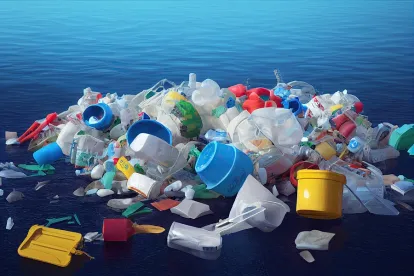On February 15, 2024, the U.S. Environmental Protection Agency (EPA) announced the release of a new methodology for detecting 32 per- and polyfluoroalkyl substances (PFAS) in high-density polyethylene (HDPE) containers. According to EPA, the method can accurately identify PFAS contamination at levels as low as 0.002 parts per billion (ppb) (or 2 parts per trillion (ppt)). EPA states that in releasing this method to the public, it “is enabling the industries that utilize HDPE containers, including container manufacturers, to test the containers before use, preventing PFAS contamination of pesticides and other products stored in HDPE plastic containers.” EPA notes that the method also has wide applicability for other industries, as it can be modified to test for PFAS in additional solid samples, such as fabric, packaging paper, and more.
In its press release, EPA states that since learning about potential PFAS contamination in a small number of mosquitocide products in September 2020, it has taken a number of steps to address this issue. These include:
- Releasing data in March 2021 that preliminarily determined that PFAS in those specific products formed from a chemical reaction during the container fluorination process that then leached into the pesticide product;
- Releasing another study in September 2022 testing the leaching potential of PFAS over a specific time into test solutions packaged in different brands of HDPE fluorinated containers; and
- Notifying manufacturers (including importers), processors, distributors, users, and those that dispose of fluorinated HDPE containers and similar plastics in March 2022 that the presence of PFAS formed as a byproduct in these containers may be a violation of the Toxic Substances Control Act (TSCA). More information on EPA’s TSCA compliance notification letter is available in our March 17, 2022, memorandum.
EPA states that following its March 2022 notification, the Department of Justice, on behalf of EPA, filed a complaint against Inhance Technologies, “the company that manufactured the plastic mosquitocide containers in which PFAS was found.” According to EPA, Inhance Technologies “failed to comply with TSCA’s notice, review, and determination requirements prior to manufacture.” Separately, in December 2023, EPA issued orders to Inhance under TSCA Section 5 directing it not to produce long-chain PFAS that are created in the production of its fluorinated HDPE containers. More information on EPA’s orders is available in our December 7, 2023, blog item.
Commentary
Bergeson & Campbell, P.C. (B&C®) applauds EPA with advancing the development of a sensitive and reproducible method for identifying PFAS. This method will aid stakeholders with determining whether their containers or products contain detectable levels of PFAS.
In B&C’s view, it is unclear whether the presence of PFAS as byproducts or impurities in HDPE containers is a violation of TSCA. This question is under judicial review in federal District Court and the U.S. Court of Appeals for the Fifth Circuit, which is reviewing whether EPA properly issued the Section 5 orders for Inhance’s significant new use notices (SNUN).
We note that a larger issue for PFAS is the scientific basis for EPA’s reference values that drive the need for sensitive analytical methods. EPA’s PFAS reference values are based in part on reports from Grandjean et al. (2012) and Budtz-Jørgensen and Grandjean (2018). These authors reported that PFAS serum concentrations were associated with a reduced immune response to tetanus and diphtheria toxins in young children. EPA’s draft oral reference dose (RfD) for perfluorohexanesulfonic acid (PFHxS, Chemical Abstracts Service Registry Number® (CAS RN®) 355-46-4) and related salts is 0.0000000004 mg/kg-bw/day (i.e., 0.4 picograms/kg-bw/day).
During the interagency review of EPA’s draft RfD for PFHxS, the Department of Defense (DOD) questioned the scientific basis for EPA’s draft RfD, noting “that there is no clinical relevance to the findings of these authors” i.e., Grandjean et al. (2012), and Budtz-Jørgensen and Grandjean (2018). The Agency for Toxic Substances and Disease Registry (ATSDR) expressed similar concerns in a seven-page comment document, which included input from ATSDR’s consultation with a vaccine subject matter expert from the Centers for Disease Control and Prevention (CDC).
Regardless of the concern levels that EPA ultimately sets, B&C applauds EPA’s development of its new method. We expect that EPA will continue to develop new methods for PFAS that will expand the universe of substances measured and types of matrices evaluated. We believe that the differences of opinion that exist on the science used for supporting EPA’s reference values will remain an ongoing source of disagreement among EPA, other federal partners, and the public. EPA will have to be proactive with its risk communication on PFAS detected using its methods and how those data fit within a risk spectrum.


 />i
/>i

